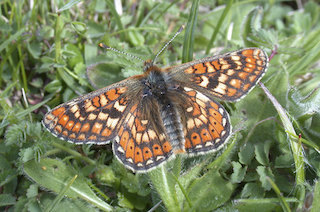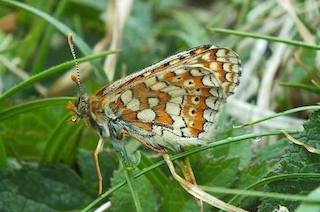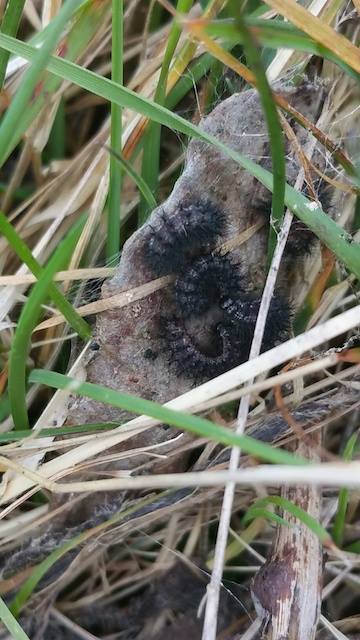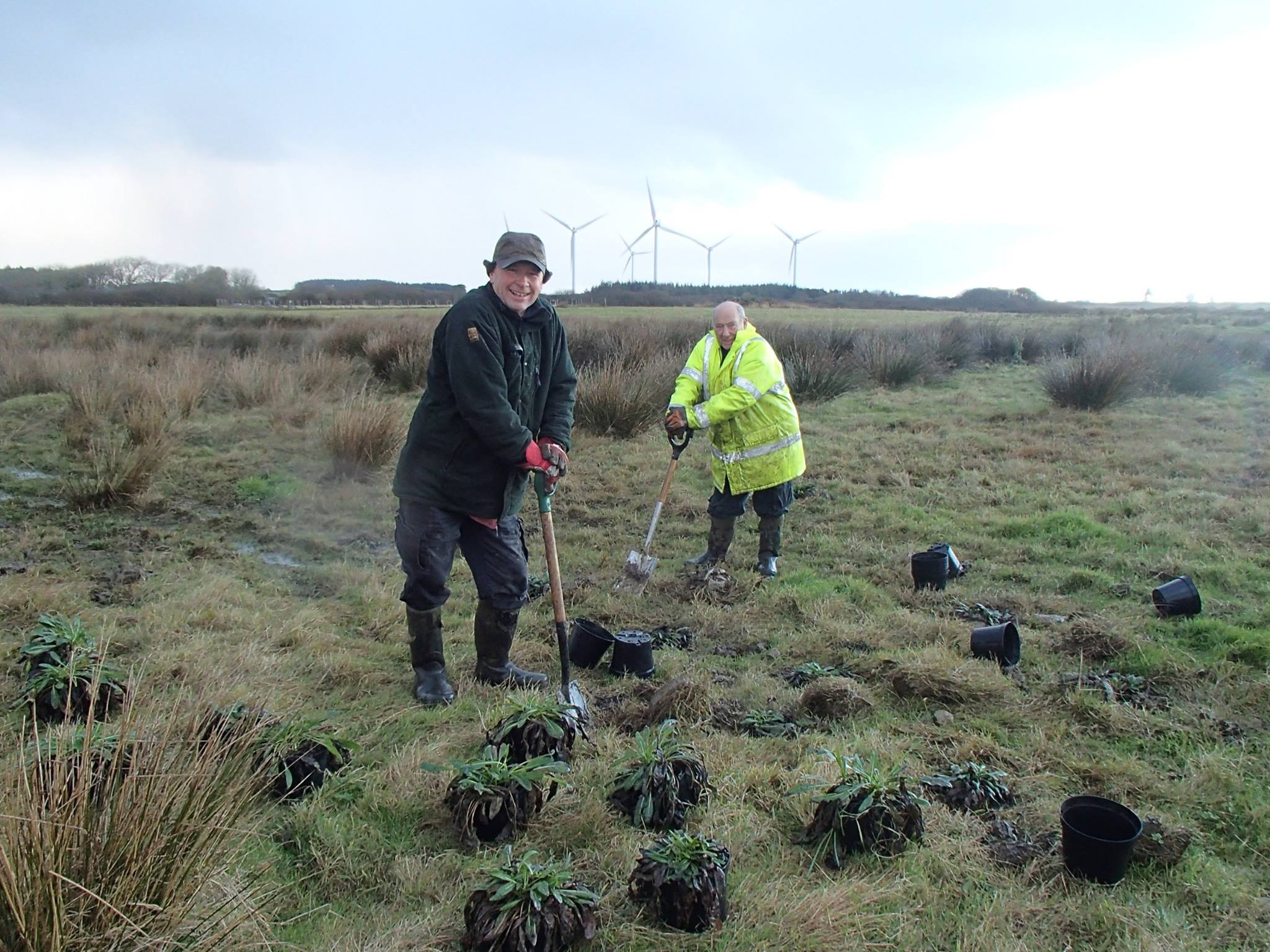The Lizard is home to one of the UK’s rarest butterflies: the beautiful Marsh Fritillary.
Sadly, habitat destruction and agricultural intensification have, over the years, had serious consequences for the Marsh Fritillary (Euphydryas aurinia), which was once far more widespread nationally.


The Lizard is one of its remaining strongholds, and much conservation effort is being directed at maintaining and benefitting the species locally. Teams from Natural England, the National Trust and Cornwall Wildlife Trust, in close partnership with Butterfly Conservation and the University of Exeter, work hard to ensure existing habitats are managed appropriately. Researchers at the University have undertaken survey and monitoring work over the last few years to help establish where the populations are, what are the issues driving their decline, and how we can best help them.
About Marsh Fritillaries

With their strong orange and brown patterning and fluttering flight, it is fairly easy to identify a Marsh Fritillary. The adults are on the wing in May and into June. The gregarious bristly caterpillars spin protective webs together and can be spotted though the summer and then again in early spring before dispersing to pupate. The photo (right) shows a Marsh Fritillary caterpillar web (photo by Sarah Board).
When can we see them? The Marsh Fritillary lifecycle
 |
May: Adults emerge (males first)
Mid-June to mid-July: Eggs on underside of host plant (Devil’s-bit Scabious)
July: caterpillars, in comunal larval webs
Autumn and winter: Caterpillars overwinter in communal hibernaculum
Late February / early March: Caterpillars re-emerge to feed in webs, dispersing by early April
Mid-April to May: Pupate in vegetation close to ground
Where can we see them?
Predannack and Mullion Cliffs are two of the best places to see them. Cornwall Butterfly Conservation and Natural England usually jointly arrange a Marsh Fritillary walk at this location in May.
What is being done to help Marsh Fritillaries on The Lizard?

Researchers at the University of Exeter have established that Marsh Fritillaries are restricted to two major colonies on The Lizard, with a few smaller population centres. This means the species remains extremely vulnerable, and ongoing conservation work is therefore vital. Initiatives are focussed on improving habitat quality by linking colonies and increasing the amount of Devil’s-bit Scabious (the caterpillar foodplant). Local farmers as well as conservation organisations and the University are all involved in this work.
Published: May 2021
Author: Amanda Scott
